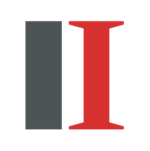As companies return to work post-pandemic, it is clear that there is much to be done in leading the way in a workplace characterised by extreme flexibility and hybrid working, says Karen Armstrong.
The next great disruption is ‘hybrid working’ and it’s a good time to check our readiness to embrace it confidently, according to the Work Trends 2021 survey. The survey revealed that 66% of leaders say their company is considering redesigning office space for hybrid working, 73% of employees want flexible remote work options to remain in place and 67% of employees want more in-person work or collaboration post-pandemic.
Whilst many have made a success of home working, with IT teams and HR being the recent heroes enabling things to come together fast, not everyone has had it plain sailing. Gen Z, women, front line workers and new and more junior staff have reported struggling in the past year. Managers have also had their own challenges with over 40% in a recent Harvard Business Review survey admitting that they doubted their ability to manage remote staff.
Despite an early sense of coming together in the first stages of lockdown, many employees are now feeling a big disconnect, with 37% of the global workforce reporting that their companies are asking too much of them. Some teams have become more siloed as a result of remote working, whilst other reports state over 40% of the global workforce plan to leave their employer this year.
These are tough new realities for employers given the existing challenges the pandemic has already delivered, so taking a thoughtful approach to hybrid working will be critical to retaining and attracting diverse talent. We are still learning and developing our company philosophies as hybrid working models grow and evolve, yet it seems we are at a point where we can re-examine traditional notions of aligning particular roles with particular settings and location no longer being a deal breaker.
We will, however, need to build additional capabilities in the new hybrid world of work to enable our teams, clients and business to thrive in the months (and years) ahead. Managers and leaders will need to create the right culture through new ways of working, blending a remote and in-person workforce by focussing on employee wellbeing, engagement, meaningful communication and continuous learning in their teams.
Many people are looking forward to a return to the office away from cramped and noisy home working set-ups, or where they have missed the social connection, whilst many more appear to want to retain the flexibility of a non-commute to work. Conversations with our clients suggest that most are allowing people to work where they feel most productive - thus hybrid working is fast becoming the new context within which we need to be skilled at creating the environment to bring out the best in our teams.

Central to that environment is the need to address the challenges and the reality that has emerged in the last year, suggesting the majority of employees want to have more connection and collaboration in a post-pandemic world. As a leader it’s about how you manage the variety of needs and expectations, not just of your team members but how you align these with client and business expectations as well.
Hybrid working as a new operating model and strategy is creating new challenges, encompassing inclusive space design, innovative technology solutions and a blended remote and in-person workforce. A repurposed workplace must address new employee expectations whilst connecting a more distributed workforce, enabled to create innovative ways to work together to solve business problems and meet clients’ needs.
As leaders we need to engage proactively in co-creating with our teams a hybrid model that works in the context of our organisation’s promise of the employee experience and how we collectively live the values which serve our purpose and client mission.
Our understanding of flexibility has been irrevocably expanded and fast-tracked in the last year and we need to be gearing up to maximise the opportunities it brings. One of those opportunities includes embracing a broader definition of productivity, which we can now see is influenced by employee wellbeing, ongoing learning and greater collaboration - all of which an effective hybrid model should be delivering.
It is complex and challenging for everyone and managers must lead the way in a post pandemic workplace characterised by extreme flexibility and hybrid work. Hopefully our check list (linked below) offers you a useful way to take stock of how you’re doing with some practical tips and ideas on continuing to develop your own approach.
Click here to access a checklist for managing a hybrid team.
Karen Armstrong is director of KA Executive Search Ltd.

